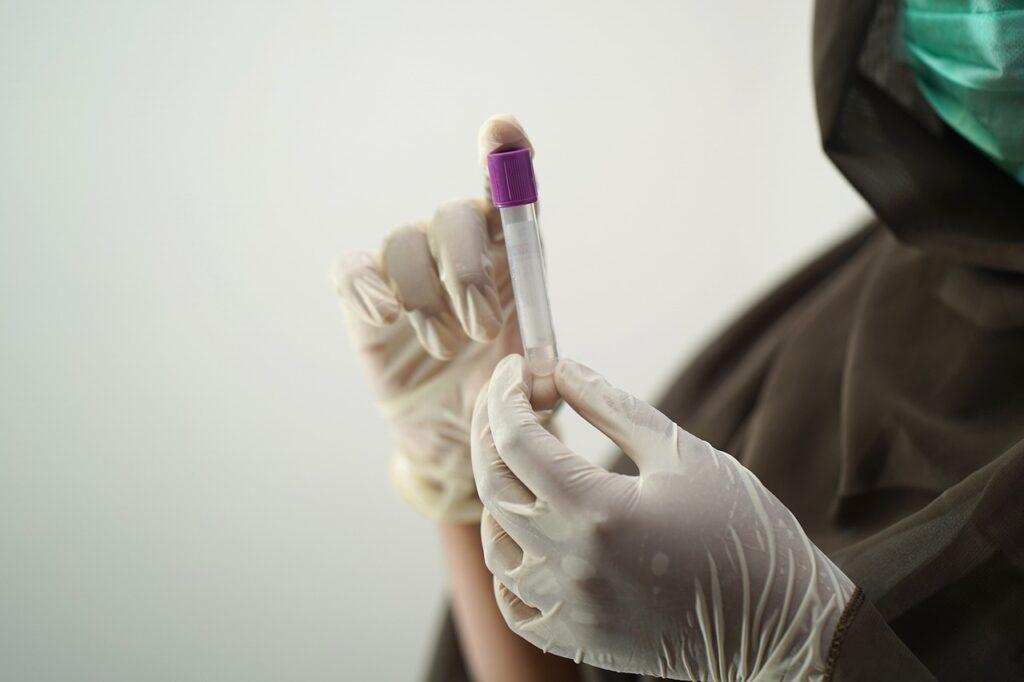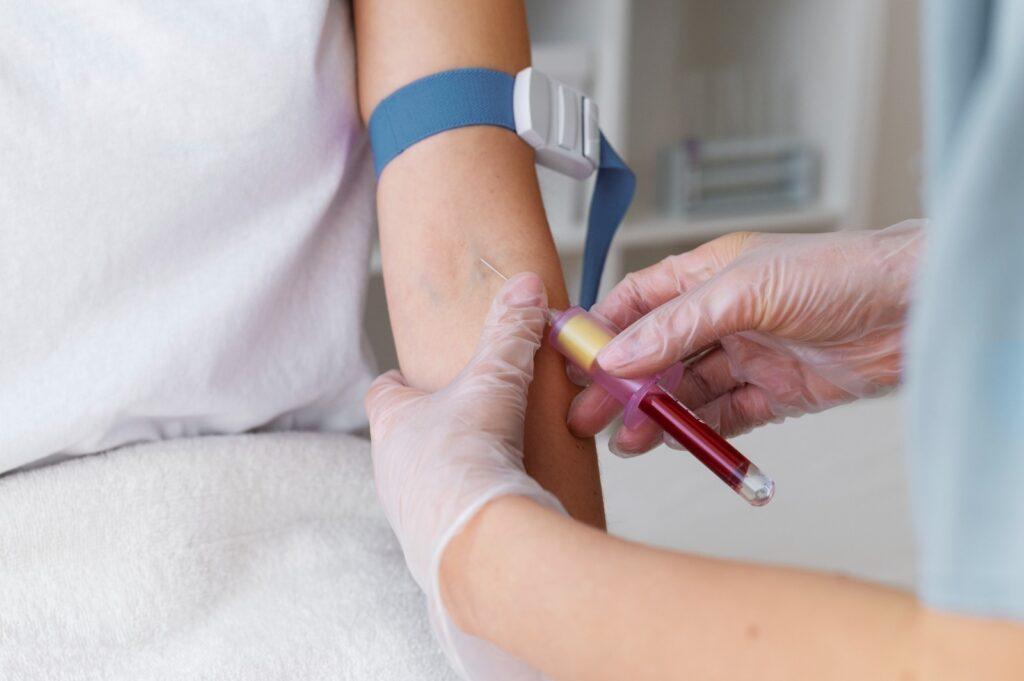In the vast and intricate world of healthcare, the unsung heroes who ensure the smooth and accurate blood test home collection often remain behind the scenes. These professionals are called phlebotomists, and their role in successful blood sample collection cannot be overstated. Let’s delve into the critical responsibilities, skills, and impact of phlebotomists in healthcare settings.

The Phlebotomist’s Vital Role in Blood Test Home Collection
Precision and Accuracy: Phlebotomists are skilled at drawing blood from patients with accuracy and precision. Ensuring that the right sample is collected from the right patient is paramount. Their careful attention to detail minimizes the risk of errors that could have severe consequences in diagnostics and treatment.
Patient Comfort: Beyond technical proficiency, phlebotomists excel in providing compassionate care. They understand that many patients are apprehensive about needles and blood draws. The ability to put patients at ease, explain the procedure, and perform the draw with minimal discomfort is a hallmark of a skilled phlebotomist. Thus ensuring smooth blood test home collection.
Infection Control: Phlebotomists are also trained in infection control measures to prevent the transmission of diseases. Their adherence to strict protocols for cleanliness and sterilization is crucial, especially in times of infectious outbreaks.
Identifying and Labeling: The process doesn’t end with drawing blood. Properly labeling samples, ensuring correct identification, and safely transporting them to the laboratory are all within a phlebotomist’s purview. This step is essential for maintaining the integrity of the sample and the accuracy of blood test results.
The Skills and Expertise of Phlebotomists in blood test home collection
Venipuncture Technique: Venipuncture, the art of puncturing a vein to collect blood, is a skill that phlebotomists master. They are knowledgeable about the various veins in the body and understand when to use different techniques, like using a butterfly needle for difficult draws or working with pediatric patients.
Also Read: Mastering Venipuncture: The Art And Science Of Blood Collection
Adherence to Protocols: Phlebotomists are well-versed in safety protocols and guidelines. This includes the use of personal protective equipment during the blood test home collection, proper disposal of needles, and maintaining a sterile environment to protect both patients and themselves.
Continuous Learning: The medical field evolves, and phlebotomists stay up-to-date with the latest techniques, equipment, and regulations. They participate in continuing education to remain proficient in their role.
Professionalism and Empathy: The best phlebotomists have excellent interpersonal skills. They understand that a patient’s experience goes beyond the physical procedure. Their professionalism and empathy are invaluable in easing anxiety and building trust with patients during blood test home collection.
The Impact of Phlebotomists
Phlebotomists are integral to the diagnostic process. The samples they collect serve as the foundation for an accurate diagnosis. Mistakes in blood sample collection can lead to incorrect results, which may result in misdiagnosis or ineffective treatments. A phlebotomist’s competence can literally be a matter of life and death.
Moreover, their contribution extends beyond the medical field. They play a crucial role in the research and development of new treatments, therapies, and medications. Researchers rely on precise and reliable blood test home collection samples to advance medical knowledge and improve healthcare.
Conclusion:
In healthcare, it’s often the behind-the-scenes roles of lab technicians that have the most significant impact. Phlebotomists are the unsung heroes who ensure the successful collection of blood samples, and their expertise is essential for accurate diagnoses and effective patient care. The next time you encounter a phlebotomist, take a moment to appreciate the vital role they play in your health and the advancement of medical science. Their precision, compassion, and dedication are the cornerstones of successful blood sample collection.
FAQ’s | Blood Test Home collection by Phlebotomist
- What are the advantages and disadvantages of capillary puncture blood collection compared to other blood test home collection methods?
Capillary puncture, also known as a finger stick, is a less invasive method of drawing blood compared to traditional methods. It is quicker and more convenient, particularly for infants or individuals with challenging veins. However, the amount of blood obtained is smaller and may not be sufficient for certain tests. Furthermore, there is a slight possibility of inaccurate results due to excessive squeezing of the fingertip during blood test home collection.
- Are there any specific situations where capillary puncture blood test home collection is preferred over other methods?
Definitely, using a finger prick for capillary puncture is the go-to method in certain cases. It’s especially useful when just a small blood sample is required, such as for blood sugar testing. This method is much faster and simpler than a venipuncture (drawing blood from a vein). It’s also the preferred choice for babies and young kids since it’s less invasive and causes less discomfort compared to a needle in their arm. Furthermore, capillary puncture is ideal for point-of-care testing, where immediate results are necessary at the clinic or even at home.
- What are the potential complications of capillary puncture blood collection?
Capillary blood collection is usually safe, but there are some possible problems to keep in mind. These can include slight pain, bleeding, and discomfort at the puncture site. In rare instances, there might be infection, scarring, or feeling faint. In babies, multiple punctures in the same area could cause tiny bumps that typically disappear on their own. If you have any worries about capillary blood collection, discuss them with your healthcare provider.
- What are the different types of blood tests that can be performed?
There are various types of blood tests available to check for specific things. Some common tests include the complete blood count (CBC), which evaluates red and white blood cell levels as well as platelets to screen for conditions like anemia or infection. The basic metabolic panel (BMP) measures electrolytes, blood sugar, and kidney function to provide a general overview of your body’s internal chemistry. The lipid panel examines cholesterol levels, including LDL (“bad”) and HDL (“good”) cholesterol, to assess your risk for heart disease. Your doctor will recommend the specific tests you need based on your individual situation.
Must Read: Understanding Complete Blood Count (CBC) Test
- How long does it typically take to receive the results of a blood test home collection?
The time it takes to get back your blood test results can differ based on the type of test. Usually, you’ll receive results within a few days, while some standard tests may come back in just 24 hours. However, more intricate tests may require a week or more. It’s best to discuss the expected turnaround time with your doctor or the lab for your particular test.
- What are some factors that can affect the accuracy of a blood test?
When it comes to getting a blood test, many factors can impact its accuracy. This includes your diet, medications, and the timing of the test. To get the most reliable results, it’s crucial to carefully follow the guidelines given by your healthcare provider or testing center.



